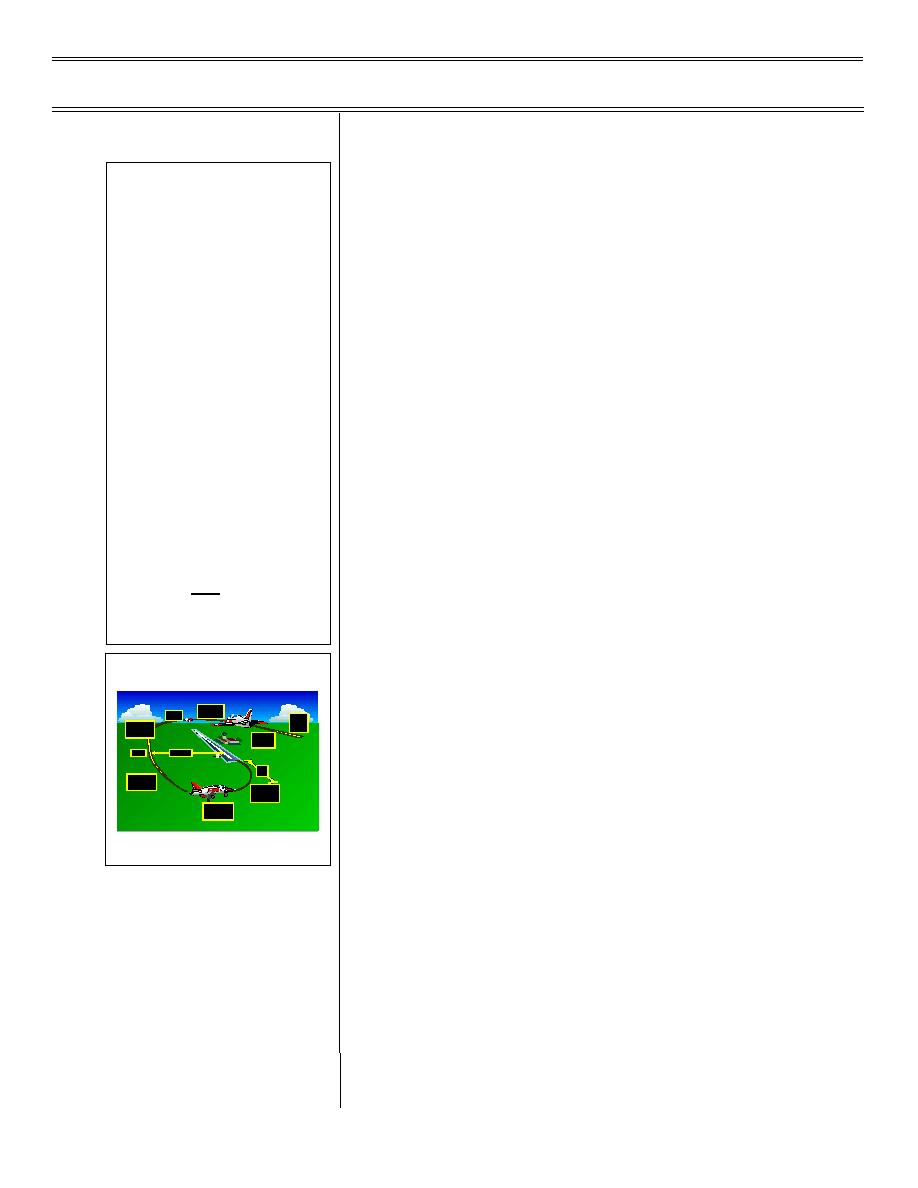
Familiarization Flight Procedures
T-45C TS, ADV & IUT FamFP-02
A. Description of pattern
Sg 5, fr 4
Landing Pattern
1.
Abeam position: approximately 1 nm
laterally, 600 ft AGL, on-speed
*The most important part of a
Fam hop
2.
180-degree position: 15 seconds past
abeam, minus 1 second for each knot of
*The key to good meatball
flying is a good start. The key
reported head wind, 600 ft AGL, on-speed
to a good start is flying a
consistent, precise pattern
3.
135-degree position: on-speed, approxi-
mately 200-300 fpm rate of descent
*Use the radar altimeter to
cross check ADI barometric
altitude
4.
90-degree position: 450 ft AGL, on-speed,
approximately 500 fpm rate of descent
*Use HUD and indexer lights
for AOA, not the gauge. Look
5.
45-degree position: 325-375 ft AGL, on-
for AOA trends
speed, approximately 500-700 fpm rate of
*Use the HUD velocity vector
descent
*Emphasize runway lineup in
6.
Start position: on runway centerline with
your scan now, while on land;
15-18 seconds straightaway to touchdown,
don't delay until getting to the
centered ball, approximately 500-700 fpm
ship
rate of descent
Sg 5, fr 5
B. Procedures
Break
250-300 KIAS,
Dirty-Up
1,100 ftAGL
Initial
200KIAS
5nm
1.
Arrive at proper abeam position
Downwind
250KIAS,
On-SpeedAOA,
2,100ft
600 ftAGL
4 nm
250 KIAS,
1,100ftAGL
Abeam
.9 to 1.0nm
2.
Communicate (to notify tower of intended
15-18
sec.
180
On-SpeedAOA,
600 ftAGL
actions): "Tower, (Call sign) four zero zero,
45
On-Speed AOA,
325-375 ftAGL
90
abeam, three down and locked, touch and
On-Speed AOA,
450 ftAGL
go"
NORMAL LANDING PATTERN
NORMAL LANDING PATTERN
3.
Intercept 180-degree position
a.
Continue from abeam 15 seconds
(adjust for head wind) with wings level
at 600 ft AGL and on-speed, zero rate
of descent
b.
Roll into 27-30 degrees AOB, adjust
power, and lower nose slightly to set
up a 200 to 300 fpm rate of descent
Page 2-22
(9-99) Original



 Previous Page
Previous Page
